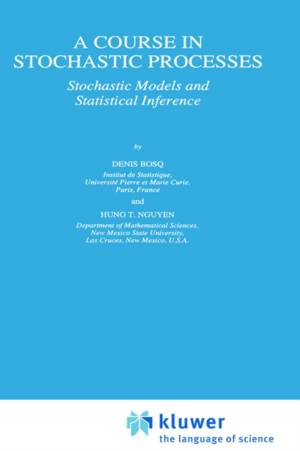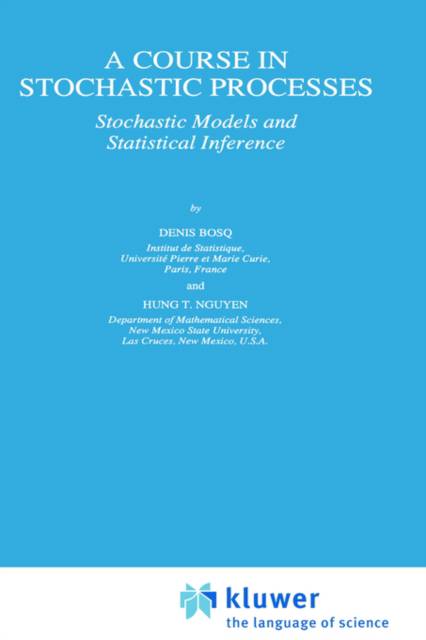
Je cadeautjes zeker op tijd in huis hebben voor de feestdagen? Kom langs in onze winkels en vind het perfecte geschenk!
- Afhalen na 1 uur in een winkel met voorraad
- Gratis thuislevering in België vanaf € 30
- Ruim aanbod met 7 miljoen producten
Je cadeautjes zeker op tijd in huis hebben voor de feestdagen? Kom langs in onze winkels en vind het perfecte geschenk!
- Afhalen na 1 uur in een winkel met voorraad
- Gratis thuislevering in België vanaf € 30
- Ruim aanbod met 7 miljoen producten
Zoeken
A Course in Stochastic Processes
Stochastic Models and Statistical Inference
Denis Bosq, Hung T Nguyen
€ 279,45
+ 558 punten
Omschrijving
This text is an Elementary Introduction to Stochastic Processes in discrete and continuous time with an initiation of the statistical inference. The material is standard and classical for a first course in Stochastic Processes at the senior/graduate level (lessons 1-12). To provide students with a view of statistics of stochastic processes, three lessons (13-15) were added. These lessons can be either optional or serve as an introduction to statistical inference with dependent observations. Several points of this text need to be elaborated, (1) The pedagogy is somewhat obvious. Since this text is designed for a one semester course, each lesson can be covered in one week or so. Having in mind a mixed audience of students from different departments (Math- ematics, Statistics, Economics, Engineering, etc.) we have presented the material in each lesson in the most simple way, with emphasis on moti- vation of concepts, aspects of applications and computational procedures. Basically, we try to explain to beginners questions such as "What is the topic in this lesson?" "Why this topic?", "How to study this topic math- ematically?". The exercises at the end of each lesson will deepen the stu- dents' understanding of the material, and test their ability to carry out basic computations. Exercises with an asterisk are optional (difficult) and might not be suitable for homework, but should provide food for thought.
Specificaties
Betrokkenen
- Auteur(s):
- Uitgeverij:
Inhoud
- Aantal bladzijden:
- 354
- Taal:
- Engels
- Reeks:
- Reeksnummer:
- nr. 34
Eigenschappen
- Productcode (EAN):
- 9780792340874
- Verschijningsdatum:
- 30/06/1996
- Uitvoering:
- Hardcover
- Formaat:
- Genaaid
- Afmetingen:
- 156 mm x 234 mm
- Gewicht:
- 689 g

Alleen bij Standaard Boekhandel
+ 558 punten op je klantenkaart van Standaard Boekhandel
Beoordelingen
We publiceren alleen reviews die voldoen aan de voorwaarden voor reviews. Bekijk onze voorwaarden voor reviews.









